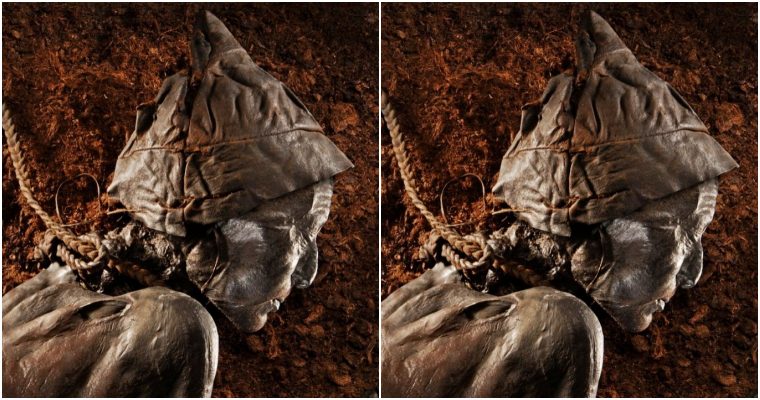The newly-discovered blue supergiant is much hotter than the Sun, and existed when the Universe was about 2.6 billion years old.

Left panel shows the color composite image of the galaxy-cluster Abell 2744 created from Hubble cameras and the location of the newly-discovered lensed star in an arc at a redshift of z=2.65 in Webb imaging. The six panels on the right show the Hubble and Webb images of the region enclosed by the red dashed lines in the left panel. The three panels in the middle column show the Webb images of the transient (green arrows). The top-right and the middle-right panels are coadded Hubble images of the region. The bottom right panel shows the difference image between the convolved Webb image and the combined Hubble template. The inset in the top right corner of the left panel shows the Hubble imaging of the sky region enclosed by the white dashed lines. Circle A marks the position of the newly-detected transient. The green dashed line illustrates the critical curve whose location is inferred from the mirrored images of the arc. Circle B marks the position of the expected counter image of A, and Chen et al. detect no transient at that location. Image credit: Chen et al., arXiv: 2207.11658.
“Galaxies and galaxy clusters act as massive gravitational lenses that are able to magnify intrinsically faint background sources,” said University of Minnesota astronomer Wenlei Chen and colleagues from the United States, Europe, Israel and Japan.
“Their magnifying power becomes greatest for intrinsically compact sources adjacent to their critical curves, because regions of greatest magnification are small.”
“Indeed, the possibility that stars that could become highly magnified by galaxy-cluster lenses was suggested in the early 1990s.”
“The first example of an extremely magnified star was Icarus, a blue supergiant in a spiral galaxy at a redshift of z=1.49,” they added.
“The star was identified in the NASA/ESA Hubble Space Telescope imaging of the MACS J1149.5+2223 galaxy cluster field. Microlensing of the background star by a foreground object in the lens caused its magnification to increase by a factor of approximately three to 2,000.”
“More recently, astronomers reported a highly magnified star dubbed Earendel at a redshift of z=6.2 behind galaxy cluster field WHL0137-08. Unlike the previous examples, microlensing, which provides direct evidence that the source has a size of less than tens of astronomical units, has not yet been detected for Earendel.”
“With a photon collection area a factor of six greater than that of Hubble and sensitivity across the infrared, the NASA/ESA/CSA James Webb Space Telescope improves our ability to detect transient events within highly magnified regions of galaxy cluster fields,” they said.
“Through observations of such extreme-magnification events, we can probe individual stars at cosmological distances, including potentially individual Population III stars.”
In their new study, Dr. Chen and his co-authors detected an extremely magnified star in the Webb/NIRISS images of the Abell 2744 galaxy-cluster field.
The star is so far away that its light has taken approximately 11.2 billion years (a redshift of z=2.65) to reach our planet.
It was magnified by a factor of 10,000 by both the Abell 2744 cluster gravitational lens and a solar-mass microlens.
The astronomers think that the star is a blue supergiant with a surface temperature of 7,000-12,000 K.
“A very luminous blue supergiant (type A0 or F5) is required to explain the microlensing event that we have discovered,” they said.
source: sci.news








